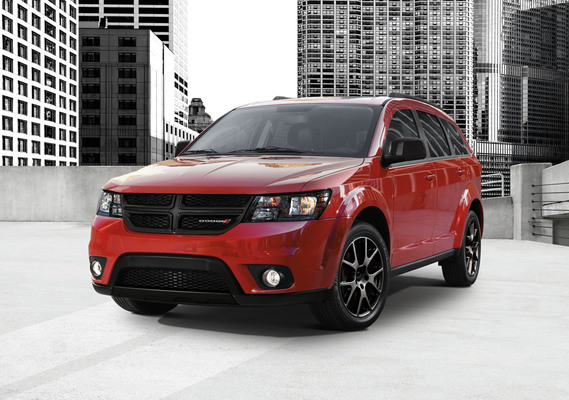By PETER ANDERSON
Dodge is unusual in currently being a single-model brand in the country.
In this case, it’s the seven-seat Dodge Journey in three trim levels – SXT, R/T and R/T Blacktop.
It’s a curious thing to have just the one Dodge when the parent company is doing pretty decent business with the Jeep brand.
But, as they say, smoke them if you’ve got them and in a world where niche cars can become surprise hits, why not?
The Journey Blacktop is loaded with stuff for its relatively modest price which kicks off at $38,500, five grand more than the basic SXT.
The price includes leather trim, rearview camera, rear parking sensors, cruise control, heated front seats, electric driver’s seat, sat-nav, voice recognition auto headlights and roof rails.
The Blacktop also gets a set of 19-inch alloys and various styling changes. Options include a sunroof, flexible seating and premium paint.
It’s a brick of a thing, but manages to look alright. A classic SUV profile, the Blacktop adds a bit of matte-black aggro and block US style into the mix. It’s a big, tall car, though, separating it from the Japanese and Euro contenders.
Behind the wheel, you’re perched up high on fairly indifferent seating and you’ll have to deal with an infuriating left-hand stalk that looks after indicators, wipers and lights and is practically unusable without an hour’s study.
If it’s raining at dusk, operating everything is like having to spell loquacious on national television while dancing the Macarena in reverse with the wrong music.
It doesn’t need to be this hard, especially when there’s nothing on the right-hand side of the column.
Mercedes does it too, incidentally, and it’s ridiculous.
Middle row passengers are well looked after, with adjustable seating, their air-conditioning vents on the roof blowing whatever temperature they’ve set to annoy their fellow seat-mates.
The outboard seats have nifty built-in boosters that mean you can do away with bulky booster seats and look after any guest kids where required.
There’s also the fold down screen in the roof which can be silenced for the front seats by a set wireless headphones, but the angle is a little awkward and will have smaller kids peering up as though looking for comets.
The third row passengers don’t get much in the way of legroom but is otherwise surprisingly comfortable and has plenty of legroom and even a decent view out of the window.
Again, there’s an air-con vent and even a drink holder.
The seatbacks ahead might prevent a view of the murky entertainment screen, however.
The interior is as roomy as the boxy exterior suggests but also has lots of places to put your things, including underfloor storage.
Six airbags (including a curtain that goes all the way to the third row), ABS, brake force distribution and brake assist.
There are no Australasian or European NCAP tests for the Journey but it got mostly green lights in the US crash testing regime.
FiatChrysler’s UConnect system takes pride of place in a big 8.4-inch screen in the centre of the dash. From within you control a range of features, including, oddly, the seat heaters but also sat-nav, six speaker stereo and phone connectivity.
It’s not super-handy to have so many functions in the screen and it makes for a cluttered if reasonably learnable interface.
The aforementioned roof-mounted screen for the second row which features the ability to play a DVD from the front or plug in a device with RGB cables in the rear.
The Journey packs a 3.6-litre V6 with 206 kW and 342 Nm driving the front wheels through a six-speed automatic. Dodge claims 10.4 litres per 100km on the combined cycle.
In our hands it drank quicker than a past Australian Prime Minister who was handy with a yard glass, our Journey recording 15.6 L/100km on a mix of city and freeway journeys.
It’s a fairly comfortable perch and there’s a good view out.
Once you’re on the move, you’ll it’s a quiet place to be and a reasonable performer.
Ask anything beyond pootling around and doing normal things and it starts to come apart a bit.
The steering is vague and too-light, the ride deteriorates (we reckon the big wheels are at fault there) and there’s a lot of body roll to contend with and not much grip.
Obviously it’s not built for anything too vigorous, so it can’t be counted as a big loss.
The real problem is its thirst.
Many cars in this class (admittedly not as affordable) have similar power and torque figures but from smaller, turbo petrols or thrifty diesels.
While there’s nothing wrong the Pentastar V6, it’s a bit out of its league against more modern competition.
It’s not a sleeper hit but there’s no denying the value of the Blacktop.
There’s plenty of stuff, it’s family focussed and puts lovers of American iron in the seven-seater game.
Just as important as all of these things, it’s well under $40,000 and will carry you, your family and all their stuff in comfort and safety.






